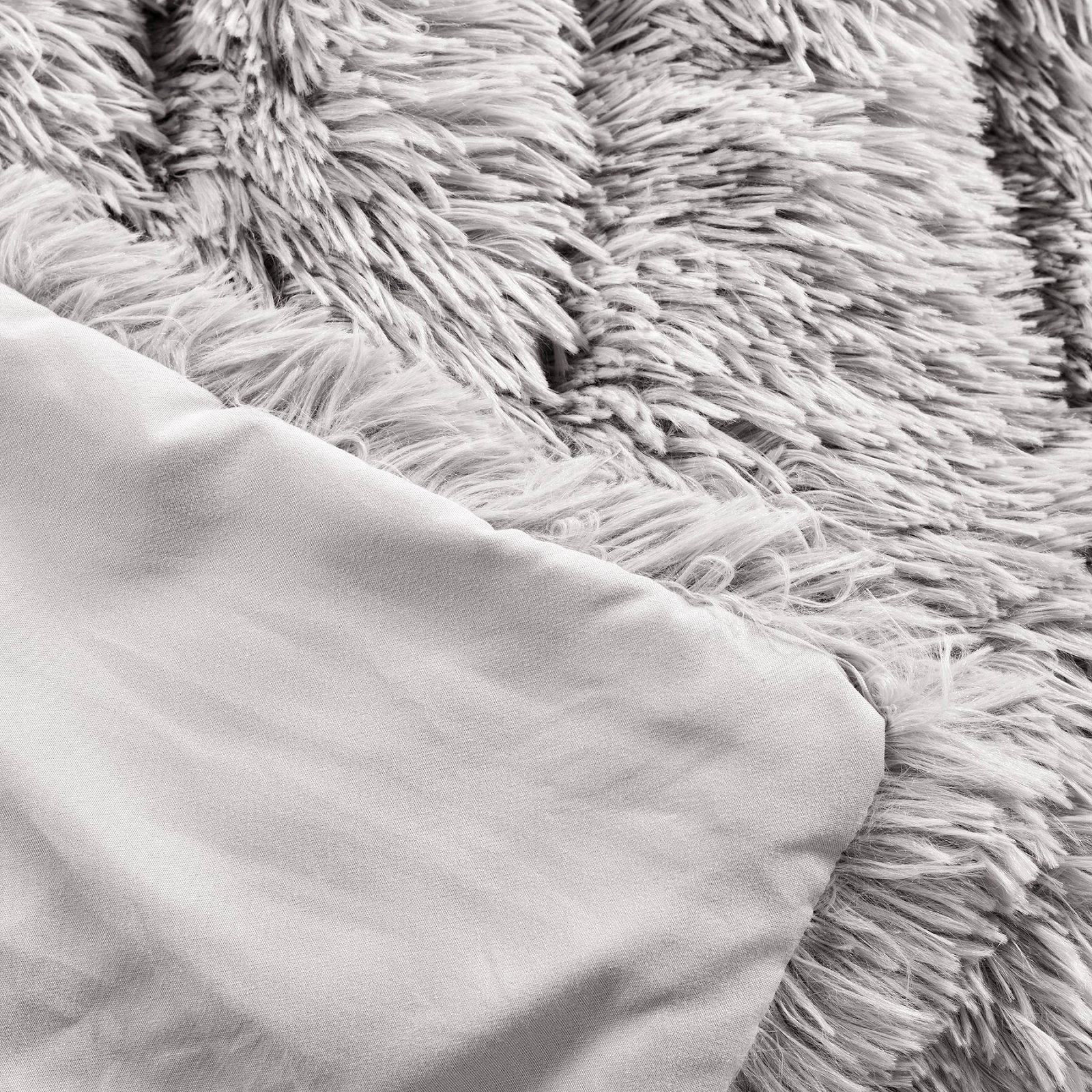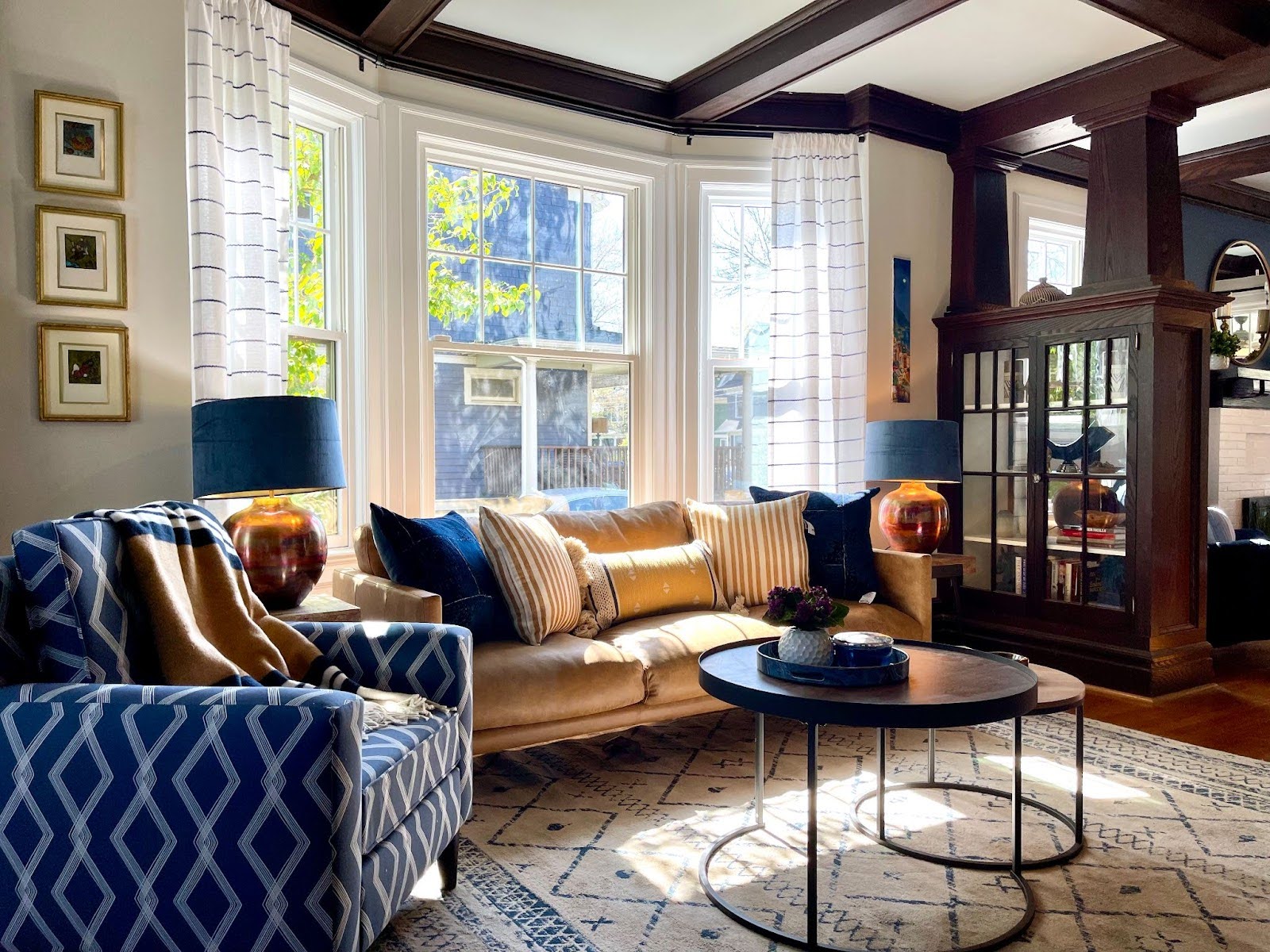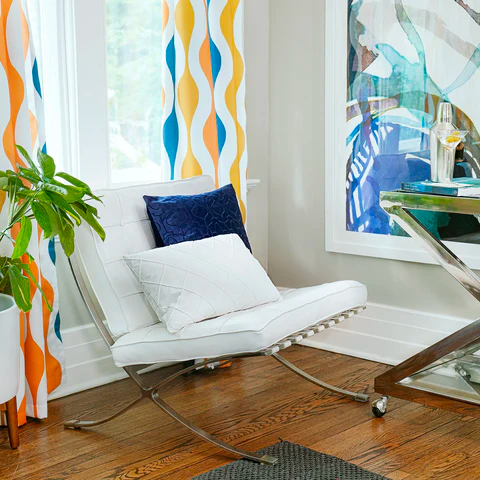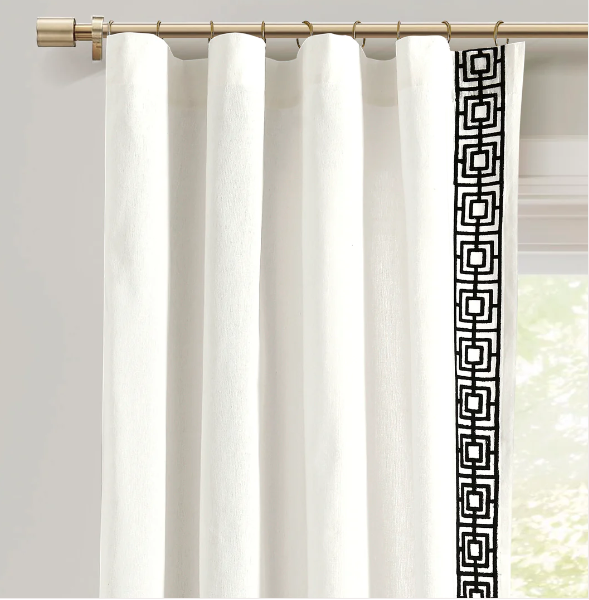Understanding Contemporary Style: What It Is And How To Decorate Your Space
Key Takeaways
- Simplicity and Flexibility: The contemporary style emphasizes simplicity, clean lines, and a monochromatic palette complemented by bold color splashes. It values form and function, creating aesthetically pleasing, livable, and inviting spaces.
- Personal Expression and Sustainability: At its heart, contemporary design is about personal expression, leveraging the latest design trends while incorporating sustainable practices and materials.
- Innovation in Materials and Design: Contemporary style is marked by using a mix of natural materials and innovative synthetics, blending comfort with technology and durability.
At its core, contemporary style is defined by simplicity, clean lines, and a monochromatic palette with bold splashes of color. It's a style that values form and function equally, ensuring that spaces are aesthetically pleasing, livable, and inviting. This design approach often incorporates open floor plans, natural light, and a mix of natural materials and sleek finishes, creating a fresh and uncluttered atmosphere.
At Lush Décor, we believe that embracing contemporary style doesn't require an interior design degree. It's about crafting spaces that resonate with your spirit while echoing the latest trends.
Whether you're a homeowner, a renter, or simply someone who loves to shop for home decor, this guide will walk you through understanding contemporary style and how to use it to breathe new life into your spaces.

Celebrate Your Style With Lush Décor: Your Home’s Best FriendAt Lush Décor, we have everything you can imagine in designs that match your unique style with the exceptional value and ultimate comfort levels you expect from a beloved brand. The Lush Décor Experience:
Are you ready to revamp your home? Explore Lush Décor’s wide array of products now and find your next décor crush among our rare finds and lush essentials! |
The Origins Of Contemporary Style
Contemporary style, often mistaken for "modern," has roots deeply intertwined with the evolution of art, architecture, and interior design over the 20th and 21st centuries.
The birth of contemporary style can be traced back to the late 20th century, when there was a significant shift in architectural and interior design thinking. Designers began to embrace the idea that spaces should not just be functional but should also reflect the personal style and needs of the inhabitants. This led to incorporating a mix of elements—from traditional to modern and everything in between—to create spaces that are not only aesthetically pleasing but also deeply personal and comfortable.
One of the key elements that fueled the rise of contemporary style was the advancement in technology and materials. Designers started experimenting with new materials like steel, glass, and concrete, which were cost-effective and offered a new aesthetic appeal. This experimentation paved the way for the iconic minimalistic and sleek look often associated with contemporary style today.

How Contemporary Style Differs From Modern Design
While people often use "contemporary" and "modern" as if they mean the same thing, especially when discussing design, they're quite different. Let's break it down to appreciate what makes contemporary style stand out, especially when we compare it to modern design.
Time Matters
Here's a big difference right off the bat. Modern design is about a specific era from the early to mid-20th century. It's famous for its minimalist vibe, clean lines, and a love for neutral colors. Conversely, contemporary design is all about what's happening right now. It's constantly changing with the times, which keeps it fresh and exciting.
What's The Big Idea?
Modern design wanted to shake off the old, overly decorated styles by focusing on simplicity and function. It's all about making things look cool without unnecessary frills. Contemporary design digs simplicity too, but it's way more flexible. It mixes all styles and elements, making spaces that are not just about the moment but also personal and meaningful.
Looks Do Matter
When it comes to looks, modern design sticks to a pretty strict script with minimalism, clean lines, and often a splash of primary colors against a neutral backdrop, contemporary design, though, doesn't like to play by these rules. It's more about mixing it with different textures, a wider range of colors, and new materials. Imagine a room that combines metal, wood, glass, and fabric in a cozy and eye-catching way.
Mixing It Up
The real heart of contemporary style is its love for mixing things up. Modern design might stick closely to its principles of form and function, but contemporary design is all about having fun and experimenting. It loves mixing different times and styles, making it adaptable and open to new ideas. This flexibility makes contemporary design stand out, offering a more personalized and lively way to decorate spaces.

Color Schemes In Contemporary Style
When crafting the perfect contemporary-style space, color plays a pivotal role. Unlike the strictly neutral palette that defines modern design, contemporary style embraces a wider spectrum of colors, allowing for more personal expression and warmth within a space. Here’s a breakdown of how color schemes work within the realm of contemporary design:
Neutral Foundations
A common misconception is that contemporary spaces must adhere strictly to stark whites or grays. While these colors often serve as a foundation due to their versatility, the contemporary style encourages layering different neutrals for a richer, more textured look. Think soft taupes, warm grays, and creamy off-whites. These hues create a serene backdrop that's refined yet inviting, making them an ideal canvas for more vibrant accents.
Bold Accents
One of the hallmarks of contemporary design is the strategic use of bold accents to inject energy and focal points within a space. This could mean incorporating a striking piece of art, vibrant throw pillows, or a statement furniture piece in hues like deep teal, mustard yellow, or even Pantone's color of the year. The key is balance; these vivid accents are used sparingly against the neutral backdrop, ensuring the space remains harmonious and not overwhelming.

Textural Contrasts
Contemporary style isn't just about color; it's also about how different textures and finishes can add depth and interest to a room. Glossy finishes might be juxtaposed with matte surfaces or soft textiles paired with sleek metals. This interplay of textures allows for a more subtle and sophisticated use of color, where light plays off different surfaces, creating dynamic shifts in hue and intensity throughout the day.
Nature-Inspired Palettes
Lately, there’s been a noticeable shift towards bringing the outdoors in, with color schemes inspired by nature playing a significant role in contemporary interiors. Earthy tones like moss green, terracotta, and ocean blues are becoming increasingly popular, grounding spaces with calming, organic vibes. These natural hues work beautifully in contemporary settings, offering a fresh, airy, modern, and timeless feel.
Personalization Over Trends
The most important thing to remember about choosing a color scheme for a contemporary space is that personal preference reigns supreme. While it's helpful to be aware of current trends, contemporary style celebrates individuality. Whether you're drawn to moody darks, serene pastels, or vibrant jewel tones, the goal is to craft a space that resonates personally, making it uniquely yours.
By embracing a more flexible approach to color, contemporary style offers endless possibilities for personalization, ensuring that each space looks current and feels genuinely welcoming and authentic.

Comparing Contemporary With Other Design Styles
The contemporary design stands out with its sleek lines, minimalist vibe, and palette that mixes neutral tones with bold accents. It's all about simplicity and keeping spaces open and airy, unlike traditional design, which goes for deep wood tones, rich details, and classic, heavy furniture for a timeless look.
When compared to Scandinavian design, both love minimalism and natural light. Still, Scandinavian leans more towards coziness with fluffy textiles and light woods, while contemporary is more flexible, often adding sleek, glossy surfaces for a dynamic feel.
Industrial design's raw, authentic aesthetic with exposed elements and heavy use of metal and wood differs from contemporary's polished finish, which might borrow industrial textures but keeps things cleaner and more refined.
Bohemian design's rule-free, eclectic mix of colors and textures contrasts with a contemporary, curated, less cluttered approach, seeking balance and harmony within a more restrained framework.
Mid-century modern, a relative of contemporary design, also loves clean lines and functionality but sticks to a more muted palette. In contrast, contemporary is more open to different influences and bolder colors.

Balancing Function And Aesthetics In Contemporary Design
One core tenets of contemporary design is the harmonious balance between function and aesthetics. This means creating spaces that not only look beautiful but also serve the needs of daily life seamlessly. Achieving this balance can be both an art and a science, requiring a thoughtful approach to design choices. Here are key strategies for blending functionality with visual appeal in contemporary interiors:
Prioritize Comfort And Usability
In contemporary design, comfort and usability are paramount. Furniture should invite relaxation and be tailored to the way you live. For instance, selecting a sofa isn't just about picking a piece that fits the room's aesthetic; it's also about ensuring it offers the right support and comfort for family gatherings and relaxation.
Choose Streamlined Storage Solutions
Clutter is the antithesis of contemporary design. To maintain the smooth, clean lines characteristic of the style, it's essential to incorporate clever, streamlined storage solutions. Built-in cabinets, hidden compartments, and multifunctional furniture pieces not only help keep the space tidy but also contribute to the sleek, uncluttered aesthetic contemporary design is known for.
Focus On Lighting
Lighting is another critical factor in balancing function and aesthetics. Contemporary design favors natural light, often employing large windows and open layouts to maximize daylight. Artificial lighting is equally important, focusing on layers that can be adjusted to suit different moods and purposes—from bright, clear lights for work and reading to softer, ambient lighting for relaxation.

Final Thoughts
Contemporary interior design is all about mixing personal style with the latest trends, making it perfect for anyone wanting to express themselves through their space. It's not just about looking good; it's about being smart with design, using sustainable materials, embracing new tech, and ensuring everything is flexible for whatever life throws.
Whether you're redoing your place, hunting for cool decor, or just daydreaming about your dream home, going contemporary means choosing a way to live that's as much about your values as it is about style. It's a way to make your space truly yours, all while keeping an eye on the future. For more from Lush Decor, check out our curated bundles and read more about style and design trends with the Lush Notes Blog!
Read also:
- 5 Key Elements That Define A Modern Farmhouse Style
- What Is Coastal Grandma Style And Why Is It Trending?
- What Is Mid-Century Modern Design?
Frequently Asked Questions
How important is texture in contemporary interiors?
Texture plays a vital role in contemporary interiors, offering depth and interest. It brings warmth to spaces that might otherwise feel cool or impersonal. Incorporating a variety of textures through items like pillows, rugs, and throws can elevate the overall aesthetic of your space.
What kind of materials are commonly used in contemporary style?
Contemporary-style homes often feature a mix of natural and industrial materials. Glass, steel, and concrete offer sleek edges and clean lines, while wood and stone introduce warmth and texture. This combination strikes a balance between modern sophistication and comfort.
What kind of artwork complements a contemporary design?
Abstract pieces, large-scale photographs, and bold sculptures work well within contemporary design schemes. Artwork in monochromatic hues or vibrant splashes of color can serve as focal points in otherwise muted spaces.
How do you make a contemporary-style home feel cozy?
To infuse coziness into a contemporary home, layer soft textures, incorporate subtle patterns, and introduce natural wood elements. Strategic lighting, like floor lamps with warm bulbs, can also create a welcoming ambiance.
Is minimalist design the same as contemporary style?
While minimalist and contemporary styles share some common ground, such as clean lines and uncluttered spaces, they are different. Contemporary style tends to incorporate more variation in textures and materials and is more flexible in incorporating trends.
How can patterns be used in contemporary styling?
Patterns can animate a contemporary space without overwhelming it, especially when used in moderation. Geometric patterns, stripes, and subtle motifs on accent pieces like cushions, rugs, or wallpaper can add layers and visual interest to a room.
Can contemporary design be eco-friendly?
Absolutely! Eco-friendly contemporary design focuses on sustainability, using recycled materials, eco-conscious fabrics, and furniture from responsibly sourced materials. Energy-efficient appliances and green technology seamlessly blend with contemporary aesthetics while prioritizing the planet.
How do you balance neutral colors in contemporary design?
Balancing neutral colors in contemporary design involves layering shades and textures. Use a mix of light and dark neutrals to create contrast. Adding metallic accents or pops of vibrant color can also break up the monochrome and add intrigue.
How can I update my home to a contemporary style on a budget?
Updating your home to a contemporary style on a budget can be achieved by decluttering spaces, repainting with neutral tones, updating lighting fixtures, and incorporating a few statement pieces. Thrifted items can also be transformed with a modern twist to fit the aesthetic.
Can DIY projects fit into a contemporary-style home?
DIY projects can perfectly complement a contemporary-style home. Handcrafted items add a unique touch and can be customized to match your space. Consider simple projects with clean lines and modern materials to align with the contemporary ethos.







Leave a comment